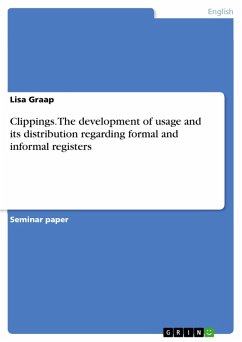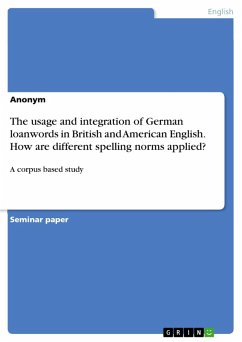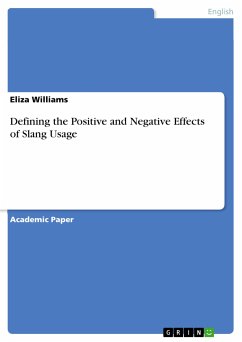Seminar paper from the year 2019 in the subject English Language and Literature Studies - Linguistics, grade: 1,0, Christian-Albrechts-University of Kiel, course: Morphology, language: English, abstract: This paper focuses on the shortening process of clipping since the shortening of words in the English language already existed four centuries ago. The process is still gaining in importance as clipping is a frequently realized process in current English. Some clippings like phone and flu seem to be even more popular than their original lexemes telephone and influenza. The question comes up if the usage of clippings regarding overall frequency and its limitation to formal and informal contexts has changed through time. Is it possible that some clippings nearly replaced their original form and are more frequent in common language? If that is the case, does a restriction of these clippings towards formal registers still exist? At first, the term clipping is defined and the academic perspective towards clipping is presented. Besides, the development and function of clipping and its different types are stated. Then the corpora used for this study are shortly introduced. After that the frequency and the usage in different registers of two clippings and their original lexemes are analyzed with the help of COCA and COHA. As a conclusion, the results of the corpus-based study will be used to answer the question of how the frequency of clippings develops through time and if popular clippings are still excluded from formal registers.
Dieser Download kann aus rechtlichen Gründen nur mit Rechnungsadresse in A, B, BG, CY, CZ, D, DK, EW, E, FIN, F, GR, HR, H, IRL, I, LT, L, LR, M, NL, PL, P, R, S, SLO, SK ausgeliefert werden.









